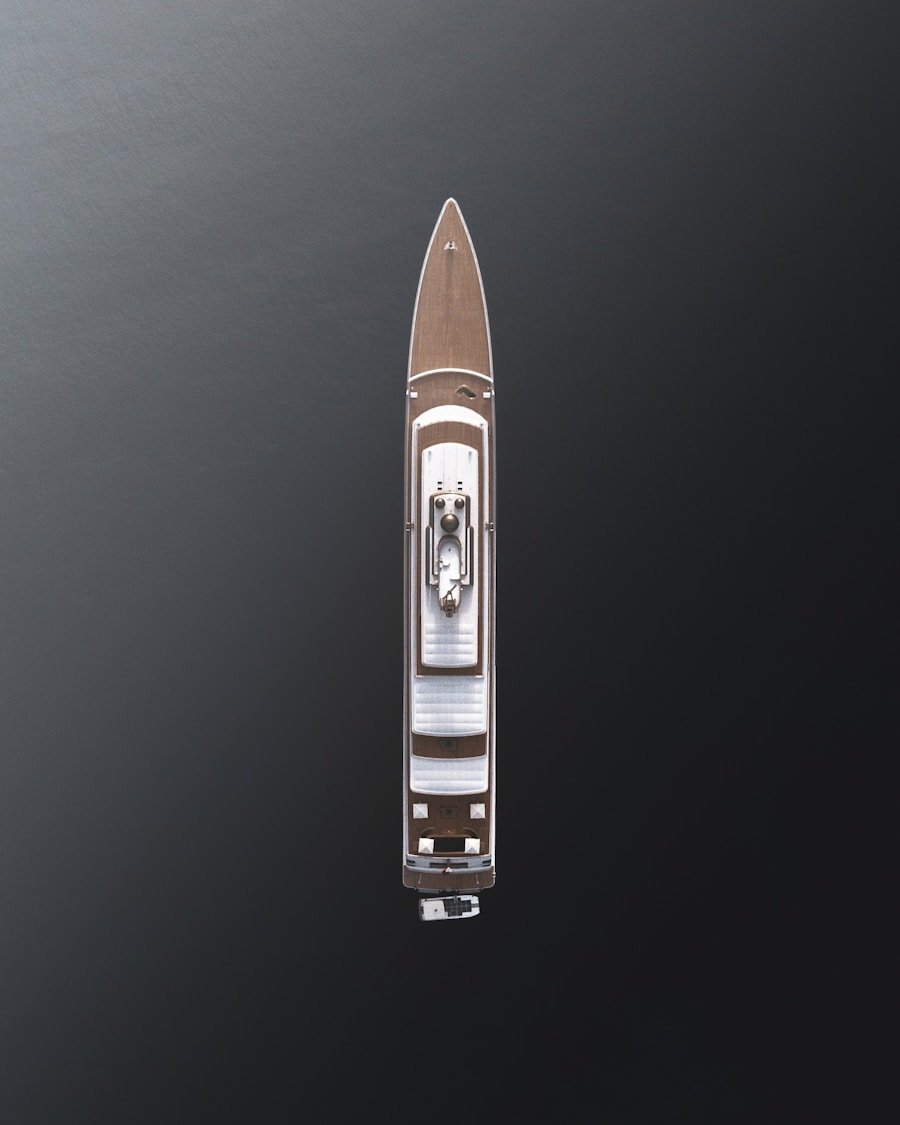Now Reading: Ultimate Guide: How to Install Mods
-
01
Ultimate Guide: How to Install Mods
Ultimate Guide: How to Install Mods

As a passionate gamer, I have always been fascinated by the world of mods. Mods, short for modifications, are user-created content that alters or enhances a video game in various ways. They can range from simple cosmetic changes, like new skins or character models, to complex overhauls that introduce entirely new gameplay mechanics or storylines.
The beauty of mods lies in their ability to breathe new life into games I thought I had exhausted, allowing me to experience them in fresh and exciting ways. The benefits of using mods are manifold. For one, they can significantly extend the lifespan of a game.
I often find myself returning to titles I loved years ago, only to discover a vibrant modding community has created a plethora of new content. This not only rekindles my interest but also provides opportunities for new adventures and challenges. Additionally, mods can enhance the overall gaming experience by improving graphics, fixing bugs, or even balancing gameplay.
In many cases, mods can transform a good game into a great one, making it feel more polished and enjoyable.
Key Takeaways
- Mods can enhance gameplay, graphics, and overall experience of a game
- Choose mods that align with your gameplay preferences and goals
- Different platforms have different methods for installing mods
- Installing mods on PC involves downloading and using mod management tools
- Console mod installation requires accessing the in-game mod menu and downloading mods from the platform’s store
- Mobile mod installation involves downloading mods from trusted sources and using file management apps
- Common mod installation issues include compatibility, conflicts, and missing dependencies
- Manage and update mods regularly to ensure compatibility and stability
Choosing the Right Mods for Your Game
When it comes to selecting mods, the sheer volume of options can be overwhelming. I’ve learned that the key is to start with a clear understanding of what I want to achieve with my modding experience. Am I looking for a simple visual upgrade, or do I want to dive into a complete gameplay overhaul?
By identifying my goals, I can narrow down my choices and focus on mods that align with my preferences. Another important factor to consider is compatibility. Not all mods work seamlessly together, and some may even conflict with one another, leading to crashes or other issues.
I’ve found it helpful to read user reviews and check compatibility lists before installing multiple mods. Additionally, I often look for mods that are regularly updated by their creators, as this indicates ongoing support and improvements. By taking the time to research and choose the right mods, I can ensure a smoother and more enjoyable gaming experience.
Installing Mods on Different Platforms (PC, Console, Mobile)

The process of installing mods varies significantly depending on the platform I’m using. On PC, modding is often more straightforward due to the open nature of the platform and the availability of modding tools. However, consoles have become increasingly mod-friendly in recent years, with some games offering built-in mod support.
Mobile gaming presents its own unique challenges, as not all games allow for modding at all. Understanding these differences is crucial for successfully enhancing my gaming experience. For PC gamers like myself, there are numerous resources available online that provide detailed instructions on how to install mods for specific games.
Console players may find that their options are more limited but can still enjoy a selection of curated mods through official channels. Mobile gamers often face restrictions due to app store policies, but there are still ways to access mods through third-party applications or by using modified APKs. Regardless of the platform, knowing how to navigate the modding landscape is essential for unlocking the full potential of my favorite games.
Step-by-Step Guide to Installing Mods on PC
Installing mods on PC is often a straightforward process, but it can vary depending on the game and the type of mod I’m using. Generally, the first step involves locating a reliable source for downloading mods. Websites like Nexus Mods or Mod DB are popular choices where I can find a wide array of user-created content.
Once I’ve found a mod that piques my interest, I download it and extract the files if they’re compressed. Next, I need to determine where to place the mod files within the game’s directory. Most games have a specific folder designated for mods, which can usually be found in the installation directory.
If I’m unsure where to place the files, I often refer to the mod’s description or readme file for guidance. After placing the files in the correct location, I launch the game and check if the mod appears in the game’s menu or settings. If everything is set up correctly, I’m ready to dive into my newly enhanced gaming experience.
Step-by-Step Guide to Installing Mods on Console
Installing mods on consoles can be a bit more complex than on PC due to restrictions imposed by console manufacturers. However, many games now offer built-in mod support that simplifies the process significantly. For instance, in games like Skyrim or Fallout 4 on consoles, I can access a dedicated mod menu directly from the game’s main screen.
To begin, I navigate to the mod section within the game’s menu and browse through the available options. Once I find a mod that interests me, I select it and follow the prompts to download and install it directly onto my console. This process usually involves confirming my selection and waiting for the download to complete.
After installation, I restart the game to ensure that the mod is active and functioning correctly. While console modding may not offer as much freedom as PC modding, it still allows me to enhance my gaming experience in meaningful ways.
Step-by-Step Guide to Installing Mods on Mobile

Modding mobile games presents unique challenges due to platform restrictions and app store policies. However, there are still ways for me to enjoy mods on mobile devices. The first step is identifying whether the game I want to mod allows for modifications at all.
Some games have dedicated communities that create modified versions of their apps, while others may not support any form of modding. If I find a game that supports mods, I typically start by searching for third-party applications that facilitate mod installation. These apps often provide a user-friendly interface for downloading and managing mods directly on my device.
Once I’ve installed a suitable app, I can browse through available mods and select those that catch my interest.
While mobile modding may not be as robust as on PC or console, it still offers opportunities for customization and enhancement.
Troubleshooting Common Mod Installation Issues
Despite my best efforts, I’ve encountered various issues when installing mods over the years. One common problem is compatibility conflicts between multiple mods. When this happens, I often find that one or more mods fail to load correctly or cause crashes during gameplay.
To troubleshoot this issue, I usually start by disabling all mods and then re-enabling them one at a time until I identify which one is causing the conflict. Another frequent issue is outdated mods that no longer work with the latest version of a game.
In these cases, I check for updates from the mod creator or look for alternative mods that serve similar purposes but are actively maintained. By staying vigilant about compatibility and keeping my mods updated, I can minimize disruptions and enjoy a smoother gaming experience.
Tips for Managing and Updating Mods
Managing and updating mods is an essential part of maintaining an enjoyable gaming experience. One of my best practices is to keep track of all installed mods in a dedicated document or spreadsheet. This helps me remember which mods I have installed and their respective versions, making it easier to identify when updates are available or when conflicts arise.
Additionally, I make it a habit to regularly check for updates from mod creators or community forums. Many modding communities have dedicated sections where creators announce updates or changes to their mods. By staying informed about these updates, I can ensure that my gaming experience remains stable and enjoyable.
Furthermore, if I ever decide to uninstall a mod, I always follow proper procedures to avoid leaving behind residual files that could cause issues later on. In conclusion, diving into the world of mods has transformed my gaming experience in countless ways. By understanding what mods are and how they can enhance gameplay, choosing the right ones for my needs, and mastering installation across different platforms, I’ve unlocked new dimensions in my favorite games.
With careful management and troubleshooting skills at my disposal, I’m well-equipped to navigate this exciting aspect of gaming and continue enjoying fresh adventures long after I’ve completed a game’s original content.
If you’re interested in learning more about the technical aspects of gaming, you may want to check out How Gaming PCs Work: A Technical Overview. Understanding the inner workings of your gaming setup can help you better optimize it for installing mods and enhancing your gaming experience. Additionally, if you’re into streaming your gameplay, you might find this article on streaming helpful in improving your streaming setup. And if you’re a fan of video games with strong narratives, you might enjoy reading about The Most Disappointing Video Game Endings for some insights on how storytelling can impact your gaming experience.
FAQs
What are mods?
Mods, short for modifications, are user-created content that can alter or add to the gameplay of a video game. They can range from simple cosmetic changes to major overhauls of the game’s mechanics.
How do I install mods?
The process of installing mods can vary depending on the game and the mod itself. In general, you will need to download the mod files and then follow the specific installation instructions provided by the mod creator. This may involve placing the files in a specific folder, using a mod manager, or running an installer.
Are mods safe to install?
While most mods are safe to install, there is always a risk when downloading and installing files from the internet. It’s important to only download mods from reputable sources and to always scan files for viruses before installing them.
Can I install mods on any game?
Not all games support mods, and the ability to install mods can vary from game to game. Some games have built-in mod support, while others may require the use of third-party tools or modifications to the game files.
Do mods affect the performance of the game?
Mods can potentially affect the performance of a game, especially if they are poorly optimized or conflict with other mods. It’s important to carefully read the mod’s description and user reviews to gauge its impact on performance before installing it.















![Top Mods for [Game Name]: Enhance Your Gaming Experience](https://gamers.co/wp-content/uploads/2025/04/image-501.jpg)











